
How Feedback Management Boosts Customer Retention and Satisfaction
Understanding customer needs and expectations has become crucial in the rapidly evolving SaaS industry. Every interaction your customer has with your product is an opportunity for growth—but only if you listen. This is where effective feedback management steps into the limelight.
Customer feedback management goes beyond merely collecting customer opinions. It's a comprehensive process that involves seeking customer feedback, analyzing it for actionable insights, and then implementing changes that reflect your customers' needs and desires. But how exactly does this translate to better customer retention and satisfaction?
In this blog post, we'll explore the intricacies of customer feedback management and its significant impact on customer retention and satisfaction. We'll explore how it allows you to pinpoint and resolve issues, enhance customer experience, and ultimately build a loyal customer base.
What is Customer Retention?
Customer retention refers to businesses' strategies and tactics for keeping their existing customers and reducing customer attrition or churn. It involves activities designed to increase the number of repeat customers and the profitability of each existing customer.
Customer retention is about maintaining a solid relationship with your customers over a long period, encouraging them to continue using your product or service. Customer retention is typically managed by customer success teams.
Customer Retention Rate = [(E – N) / S] x 100
Where: E is the number of customers at the end of the period. N is the number of new customers acquired during that period, and S is the number of customers at the start of the period.
Why Customer Retention Matters?
Customer retention and customer satisfaction is a powerful driver of sustainable growth and profitability. The benefits of retention extend beyond mere transactions, leading to deeper customer relationships, valuable customer insights, and a stronger, more resilient business. Customer retention is critical for several reasons:
- Cost Effectiveness: Acquiring new customers can cost 6 to 7 times more than retaining existing ones. Existing customers are more likely to buy from you again if they had a positive experience the first time.
- Increased Profitability: Existing customers are likelier to try new products and spend more than new customers. According to a Harvard Business School study, increasing customer retention by just 5% can lead to a 25-95% increase in profits.
- Customer Lifetime Value: Retained customers tend to have a higher lifetime value, meaning they contribute more revenue over the long term. These customers are more likely to be loyal to your brand and make repeat purchases.
- Referrals: Satisfied and loyal customers are more likely to recommend your brand to others, serving as a valuable source of word-of-mouth marketing.
- Feedback and Improvement: Existing customers can provide valuable feedback to help you improve your products or services. They are more invested in your brand and more likely to provide genuine feedback.
- Predictable Revenue: Retained customers bring in a more predictable and steady flow of revenue. This can help you with more accurate forecasting and financial planning.
- Competitive Advantage: High customer retention rates can provide a competitive advantage. It can set your business apart from competitors in terms of customer service, quality, and reliability.
How Feedback Management Increases Customer Retention and Satisfaction
Feedback management involves not just collecting customer feedback but also analyzing it and implementing changes based on the insights gained. This can significantly impact customer retention and satisfaction in several ways:
Identifies Areas of Improvement
Effective feedback management helps businesses identify areas where they can improve, whether it's the usability of their product, the improvement of product features, the responsiveness of their customer service, or the clarity of their communication. Addressing these issues can increase customer satisfaction and make customers more likely to stick around.
Effective feedback management goes beyond simply collecting feedback; it involves a systematic approach to gathering, analyzing, and acting upon the information received. This process allows businesses to identify patterns and trends to help them make informed decisions and drive positive change.
By leveraging feedback management software, companies can streamline the feedback collection process to gather real-time feedback, ensuring timely responses and reducing the risk of missing critical user insights.

Prevents Customer Churn
By proactively seeking and acting on feedback, companies can identify and address issues before they lead to customer churn. Resolving customer complaints can turn a potentially negative situation into a positive one, increasing customer satisfaction and loyalty and preventing churn.
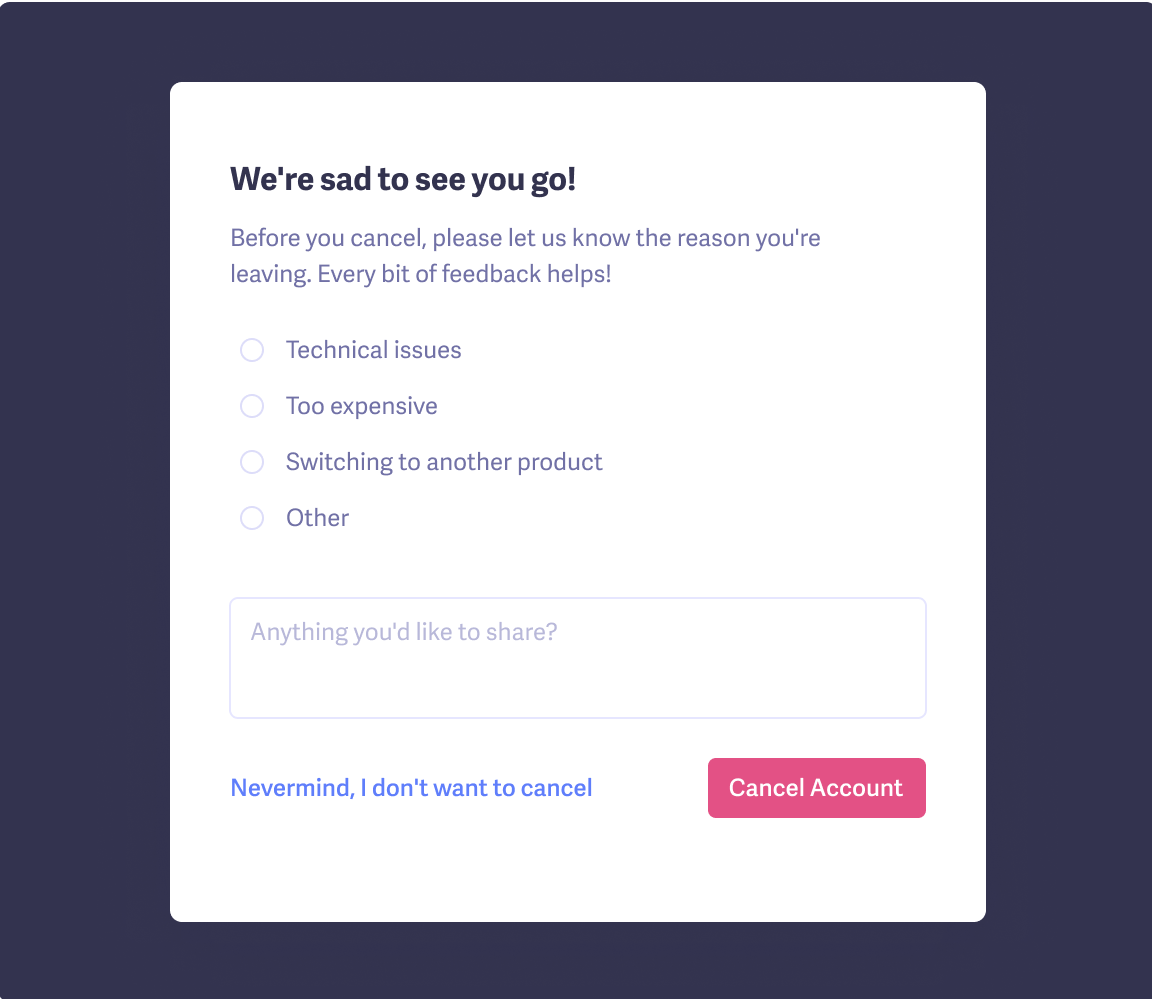
Every business wants to retain its customers and avoid customer churn. Therefore, collecting feedback from your customers to know what they like and don't like about your product and feedback management is important.
- Ask your customers the right questions. The key to understanding customer churn feedback is to set up a system that allows you to collect it.
- The next step is analyzing the data, which will help you discover the root cause of customer churn.
- Once you have this information, you can improve your product or service offerings to prevent the problem from recurring.
- The final step is acting on the feedback by implementing changes to make your product or service more appealing to your customers and updating stakeholders about the new releases with release notes.
Enhances Customer Experience
Analyzing feedback can help a company understand its customers' needs and expectations better, enabling it to enhance the overall customer experience and attain product-market fit. When customers see that a company is actively working to improve their experience, they are likely to feel more satisfied and loyal.
A robust customer feedback management system allows businesses to stay connected with their customers, continuously learn from them, and consistently improve their products and services to deliver a superior customer experience and improve product discovery.
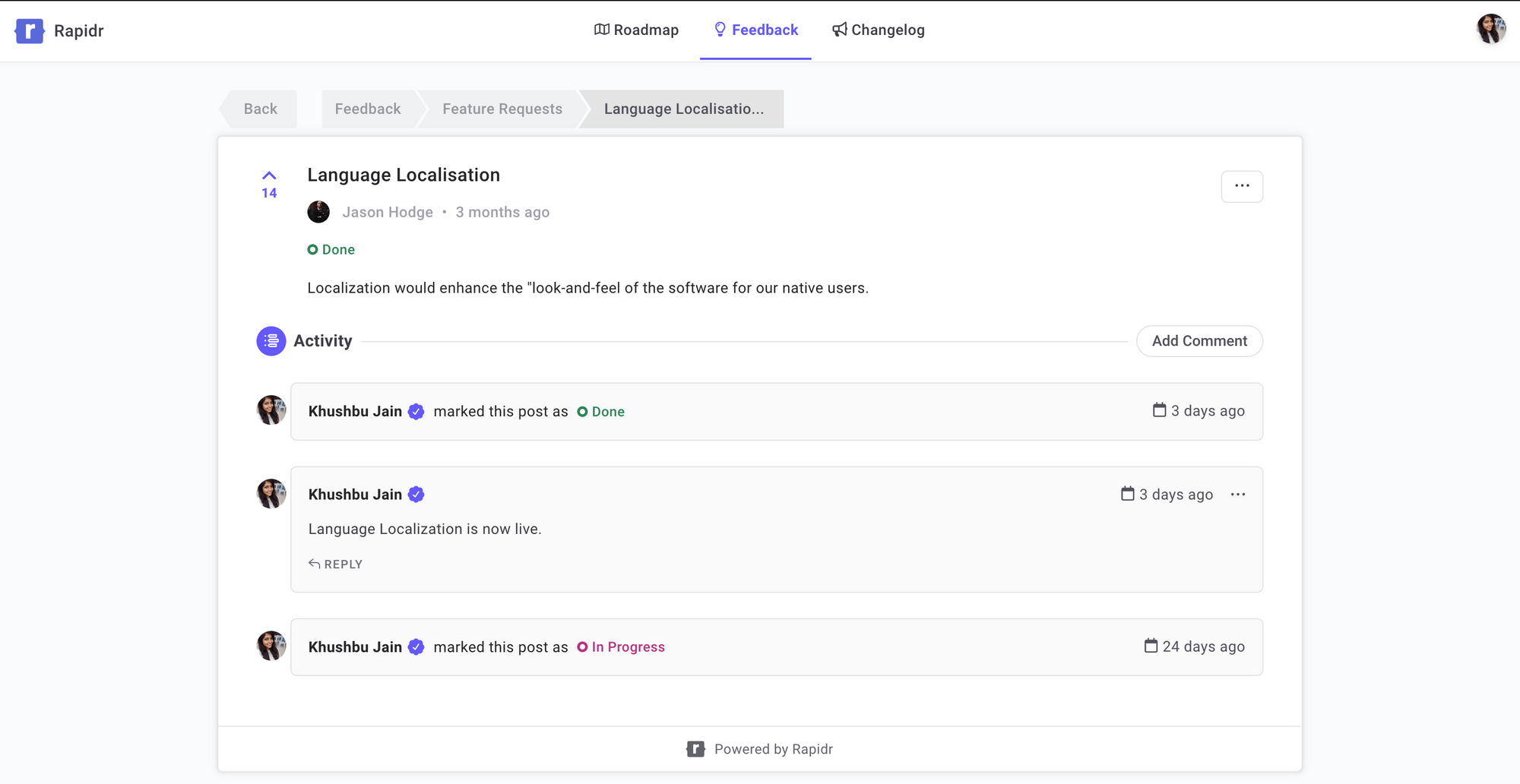
Creates a Customer-centric Culture
A strong feedback management process demonstrates a company's customer commitment. It creates a culture that values customer input and puts customer satisfaction at the forefront. This customer-centric approach can lead to higher retention rates.
According to a Microsoft Report, 77% of customers have a more favorable view of brands that ask for and accept customer feedback.
When businesses use customer feedback to guide improvements to their products, services, or customer service, it shows customers that the business is committed to meeting their needs and enhancing their experience. This can make customers feel more loyal to the brand.
Valuing customer feedback and addressing it immediately is what Tesla CEO Elon Musk is famous for. Tesla has the reputation of having a staggering NPS score of 96 and is one of the top examples of a customer-centric company.
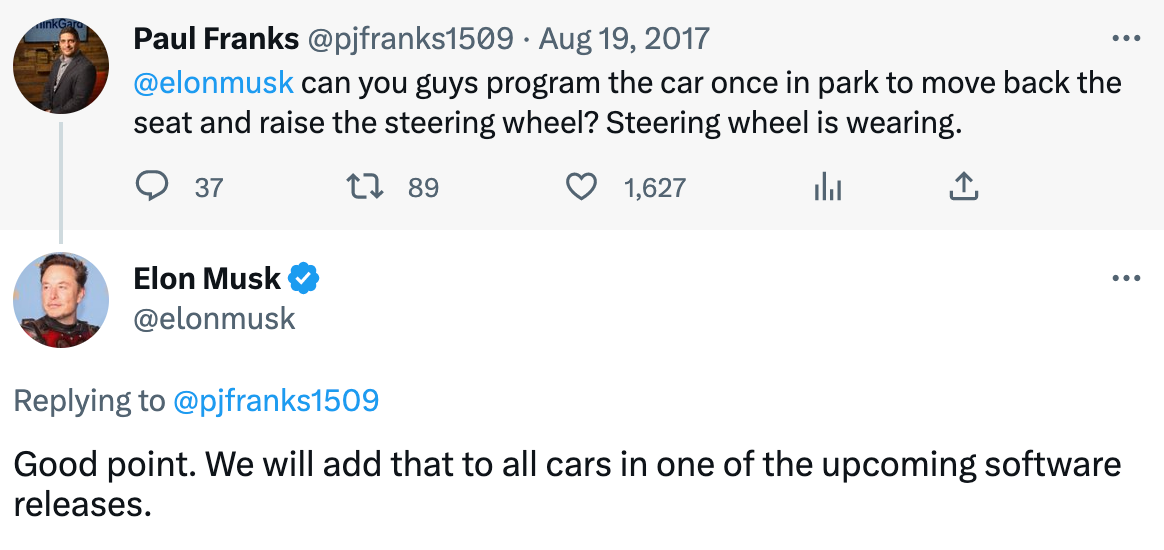
Builds Trust and Brand Loyalty
When customers see their feedback taken seriously and acted upon, it builds trust in the company. Customers feel more engaged and valued, which can strengthen their relationship with the company and increase their likelihood of remaining loyal customers.
When businesses actively seek, acknowledge, and respond to customer feedback, they demonstrate to customers that their ideas are valued and important. This recognition can foster trust, loyalty and close the feedback loop.
Businesses can create a sense of transparency by sharing changes made in response to feedback. This openness can foster trust as customers see that the business is not hiding its shortcomings and is committed to improvement. Boost customer engagement and product adoption by informing them about new releases and updates with product changelog.
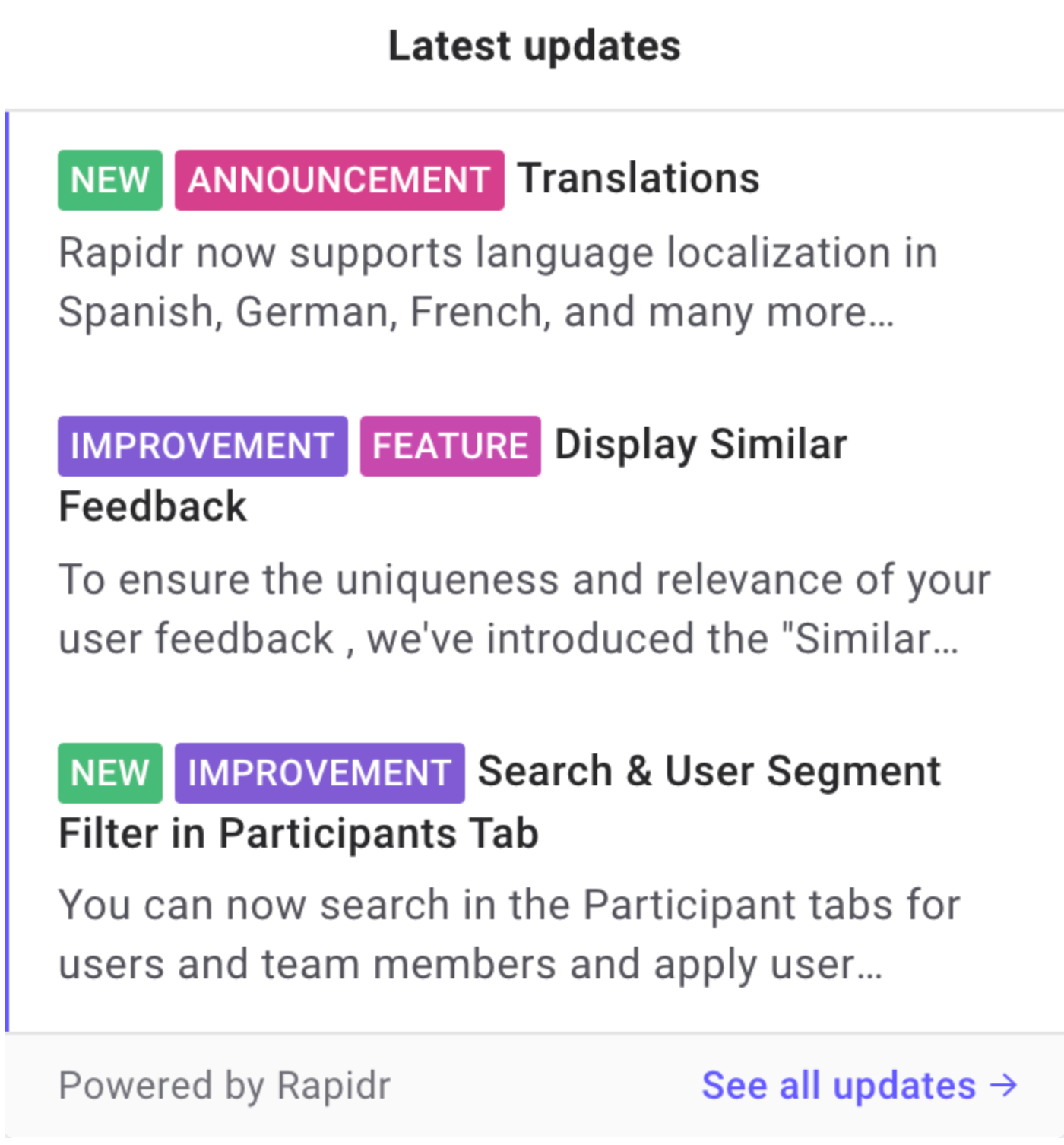
Informs Product Development
Customer feedback can provide valuable insights into what features or enhancements customers want to see.
Companies can use this feedback to inform their product development efforts, leading to products that better meet customers' needs and thereby increasing customer satisfaction and retention.
Businesses that regularly solicit and act on customer feedback create an environment of continuous improvement. When customers see a business always striving to improve and meet their needs, they're more likely to be satisfied and remain loyal. It's impossible to say yes to all feature requests, but the right ones can help guide your product roadmap.
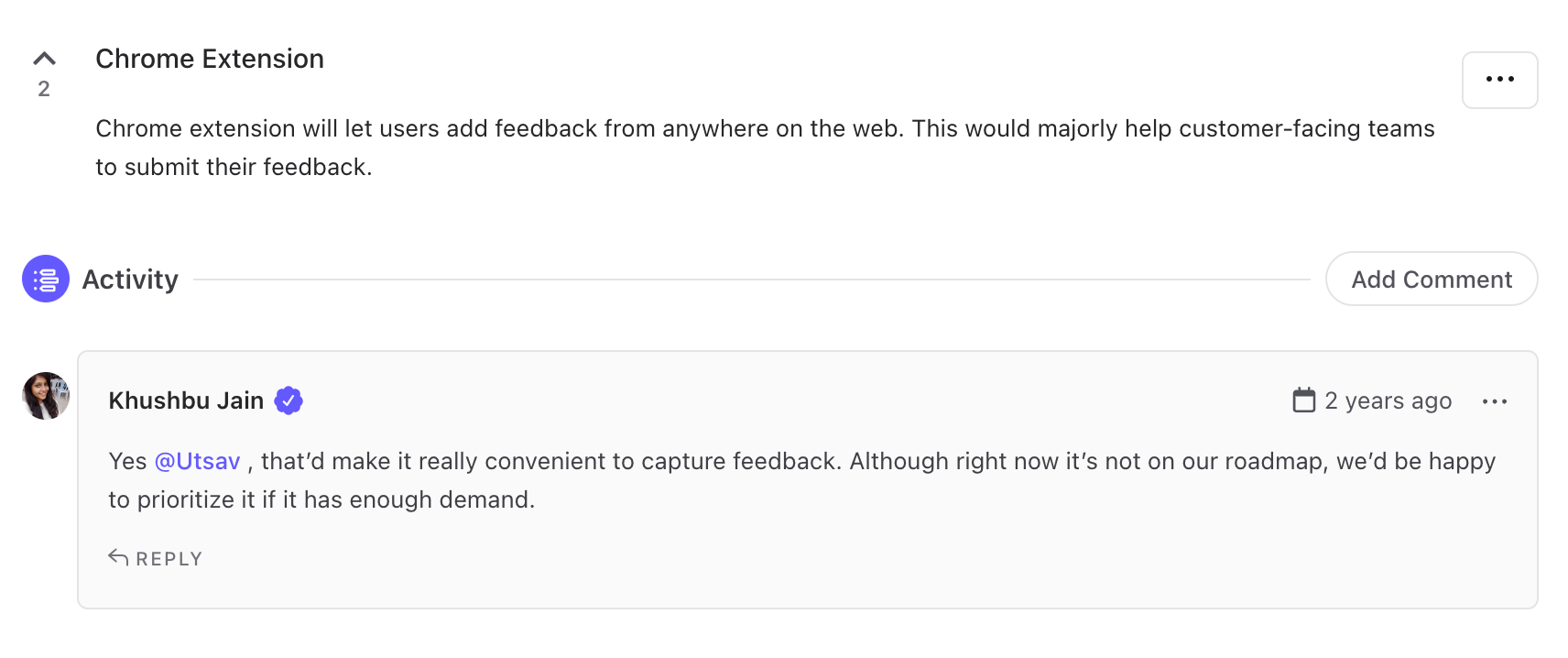
Enhances Communication
Feedback management encourages an open line of communication between the customer and the business. Regular communication can make customers feel more engaged with the company, increasing satisfaction and customer loyalty.
When customers feel they can easily share their opinions and concerns and that these will be addressed, it builds trust and strengthens the customer-business relationship.
Listen to the voice of the customers through various channels like email, social media, website feedback, and chatbots. Ask for feedback and respond proactively to their queries and complaints to increase customer loyalty and satisfaction. It is equally important to respond to negative feedback as it is to collect feedback in the first place. Keep them in the loop about which requests are in-progress or planned and which are done with a public roadmap offered by Rapidr.
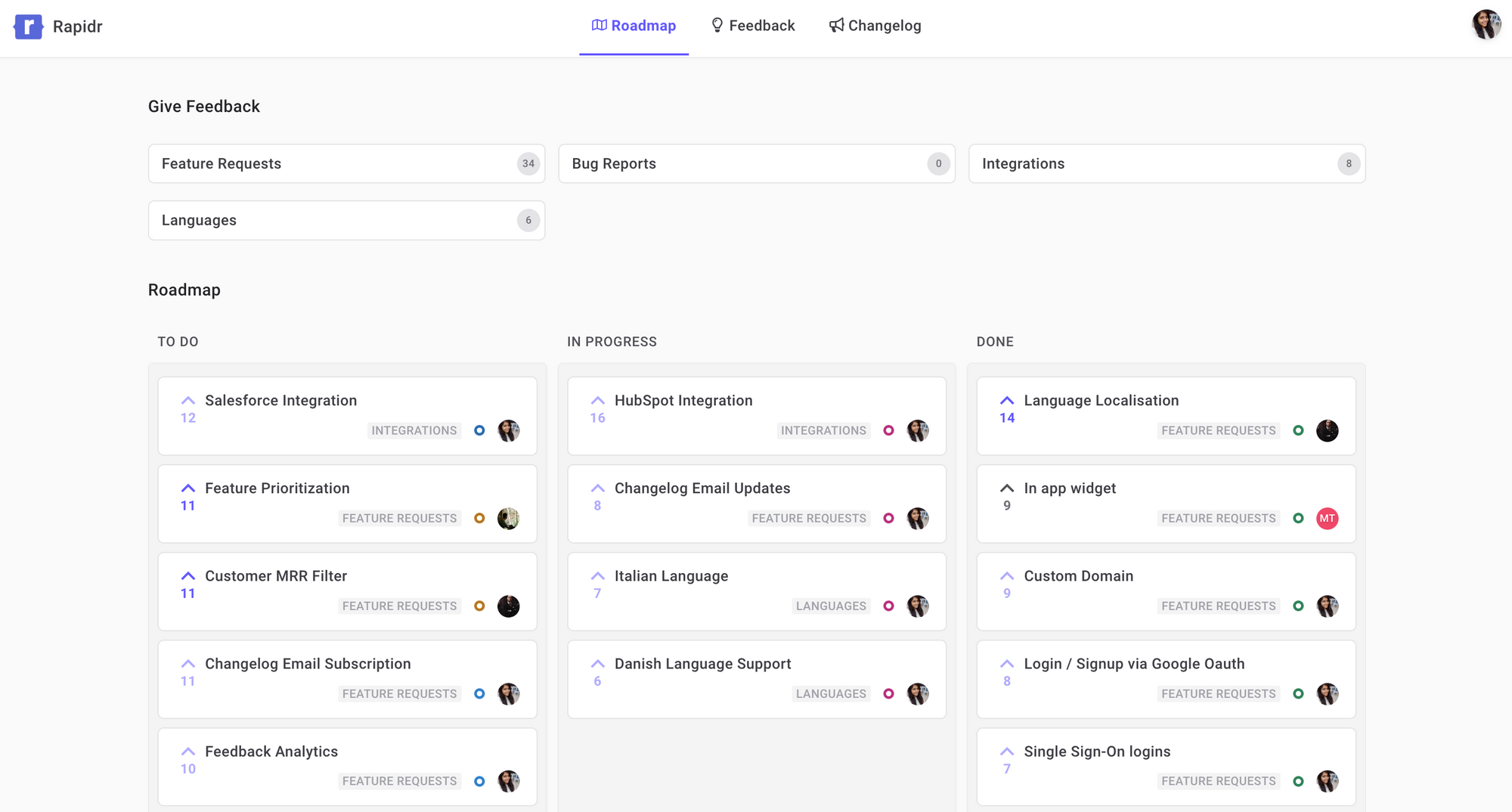
Empowers Customers
Giving customers a platform or community forum to express their opinions empowers them and gives them a stake in the business. This sense of involvement can increase both customer satisfaction and loyalty.
Customer feedback is not only about spotting the problems. It's about understanding your customers' individual needs and expectations. This understanding allows us to provide more personalized experiences, which increases customer satisfaction and loyalty. - Teresa Torres, Product Discovery Coach.
Listening to the customer's voice is important for businesses and essential for understanding what drives customer retention and satisfaction.
Slack listened to customers and tested its product for seven months before releasing the first version. In the words of CEO Stuart Butterfield, “When key users told us something wasn't working, we fixed it—immediately.” Customers love Slack, and its dedication to them showcases the importance of being customer-centric.
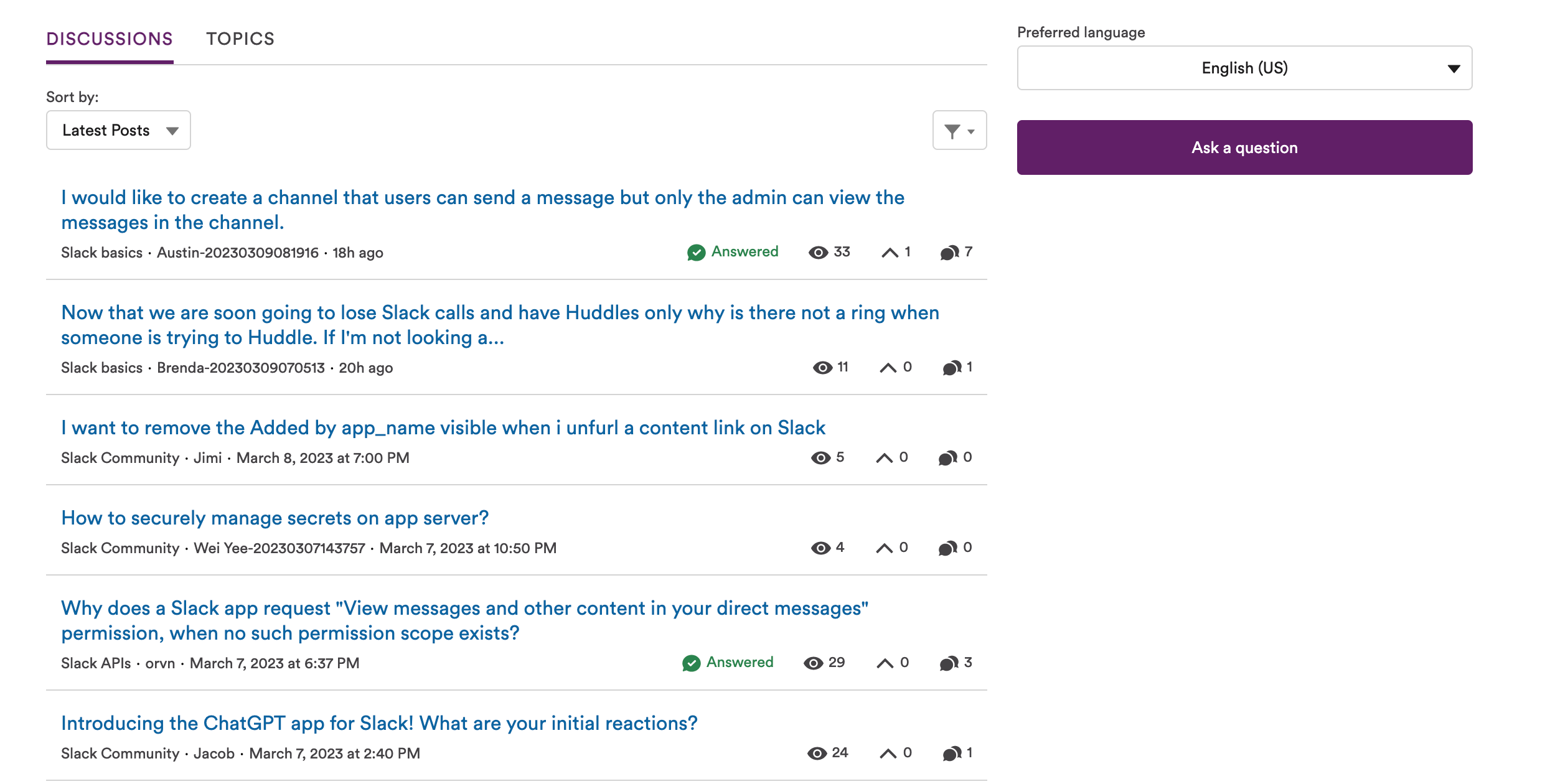
Identifies and Resolves Complaints
Feedback often points out issues that might not be obvious to the business. By addressing these problems, companies can prevent them from escalating and causing customer dissatisfaction. This shows customers that the company cares about their experiences and is dedicated to continually improving, which can boost loyalty.
In fact, Customer Retention Behavior Statistics show that customers who have had their complaints resolved have a retention rate of 54%.
Regularly collecting and acting on feedback can help businesses identify and address issues before they escalate, preventing potential damage to the customer relationship.
Using a complaint tracking tool or a feedback management tool will help you monitor for complaints and negative feedback circulating and allow you to resolve it quickly to close the feedback loop. We all know that customer complaints are the most dreaded things to handle. But, they are also an opportunity to create a loyal customer.
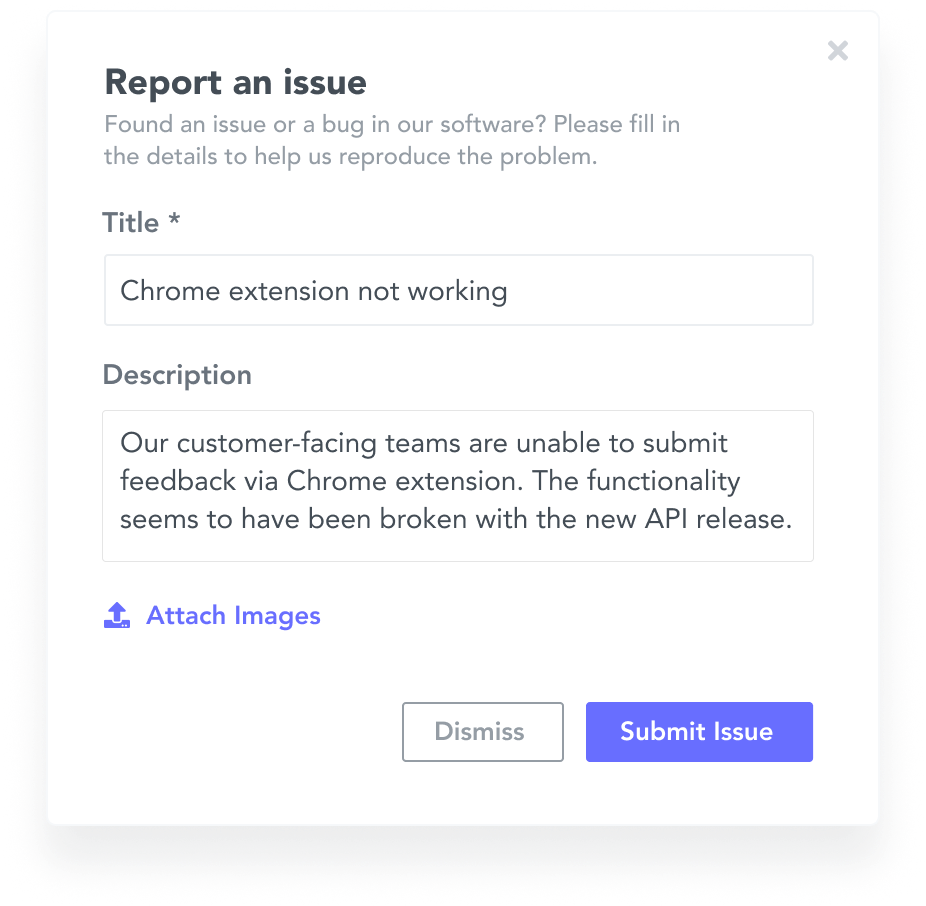
Provides Competitive Advantage
A well-managed feedback system can give businesses a competitive edge and help product managers inform the decision-making process. By continuously improving based on customer feedback, a company can differentiate itself from competitors, create an effective product-led growth strategy, and retain more customers.
Collecting and analyzing customer feedback can help you examine trends, map your customer journey, brainstorm customer retention strategies and plan customer loyalty programs, calculate customer lifetime value, and identify changes in customer sentiment or emerging issues before your competitors do, allowing you to adapt more quickly and effectively.
It also provides unique insights specific to your product, which can guide improvements that make it more attractive than your competitors and support product vision. Additionally, positive word-of-mouth referrals from satisfied customers can attract new customers, increase product adoption and expand the company's market share.
Shows Customers They're Valued
By seeking customer feedback, companies demonstrate to customers that their opinions matter. This can increase customer satisfaction and make them feel more connected to the business, enhancing loyalty.
Effective feedback management is an invaluable tool for businesses to demonstrate how much they value their customers. By actively listening to customer feedback, taking action based on insights gained, and providing personalized responses, businesses can build trust and loyalty while continuously improving their offerings. In an era where customer expectations are higher, prioritizing effective feedback management is no longer optional but essential for success.
Establish a feedback culture, maintain a centralized feedback page with Rapidr, encourage customers and teammates to provide feedback, to create a company-wide feedback culture. Regularly gather customer feedback through feedback surveys, centralized feedback portals, user interviews, and in-app feedback widgets.
Inform customers by updating the status of their feedback requests. Ensure customers know their feedback is heard by showcasing the progress with a roadmap and email updates. Just saying "thank you for your feedback, or that we’ll act on it soon" can make them feel unheard and unvalued.
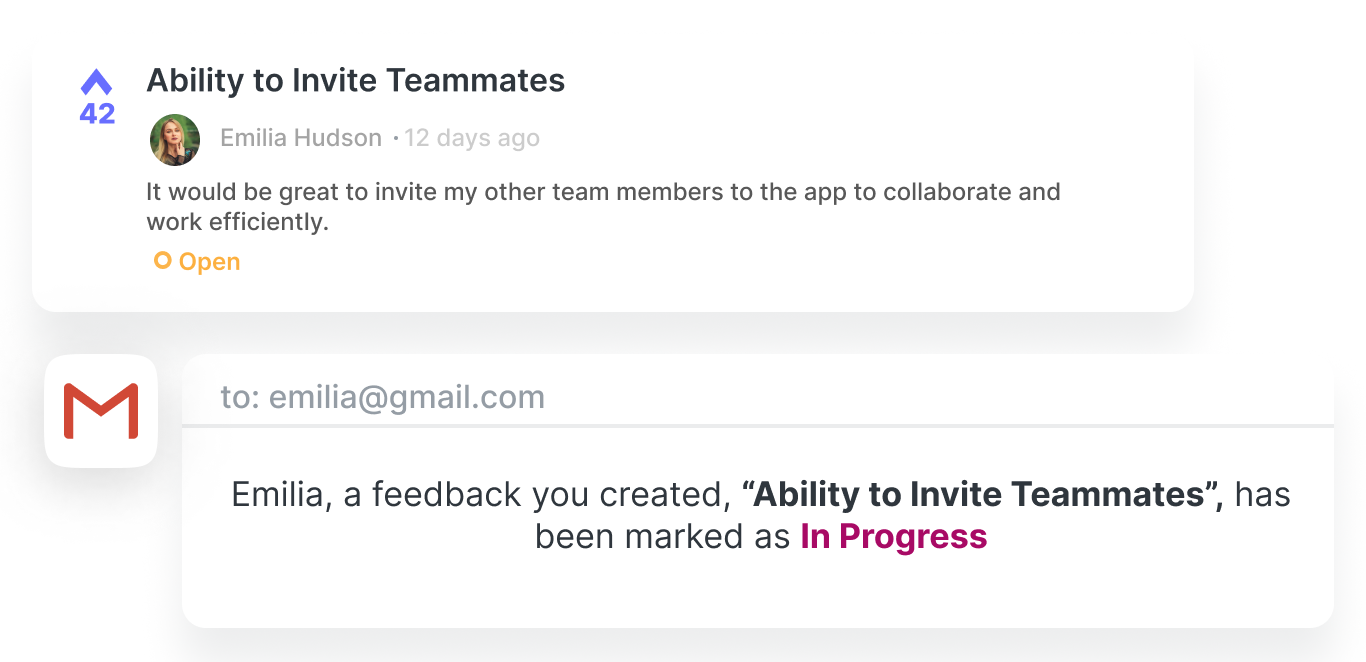
In conclusion, feedback management is not a one-off process but an ongoing cycle of listening, learning, and improving. It is critical in increasing customer satisfaction and retention, ultimately driving business growth.
Create a Dedicated Feedback Management System To Improve Retention with Rapidr
In conclusion, effective feedback management isn't an option but a necessity in today's competitive SaaS market. It's a strategic tool that businesses can leverage to ensure their offerings meet customer needs, and influence product sales, enhancing customer satisfaction and encouraging loyalty.
By placing customer feedback at the heart of your SaaS business strategy, you can retain more customers and transform them into brand advocates. After all, a happy and satisfied customer is the best business strategy.
While there are many customer feedback management tools to help you capture, organize, and prioritize feedback, consider the one that enables you to uncover the insights from the feedback and shape your product strategy.
1. Centralized and organized by category: The first step in solving this is to organize feedback in a central location. You’ll likely receive feedback from various channels and integrations like emails, Slack channels, support inboxes, forms, and in-app widgets.
2. Easily accessible to everyone: Centralizing all feedback data in one place, which can be easily accessed, will ensure that critical feedback doesn’t get lost and will allow you to understand what to prioritize.
3. Shared across internal teams: A central hub lets customer-facing teams access and submit feedback easily. A dedicated system will also help plan regular meetups with teams to discuss customer feedback and determine how to use it to define product strategy.
4. Prioritize and analyze feedback: Prioritize features and rank feature requests and tasks based on impact to make feedback-driven decisions. Remember, it's not just about collecting feedback. The real power lies in analyzing this qualitative data and implementing actionable changes that genuinely reflect your customers' desires and pain points. This ongoing listening, learning, and improving cycle sets successful companies apart.
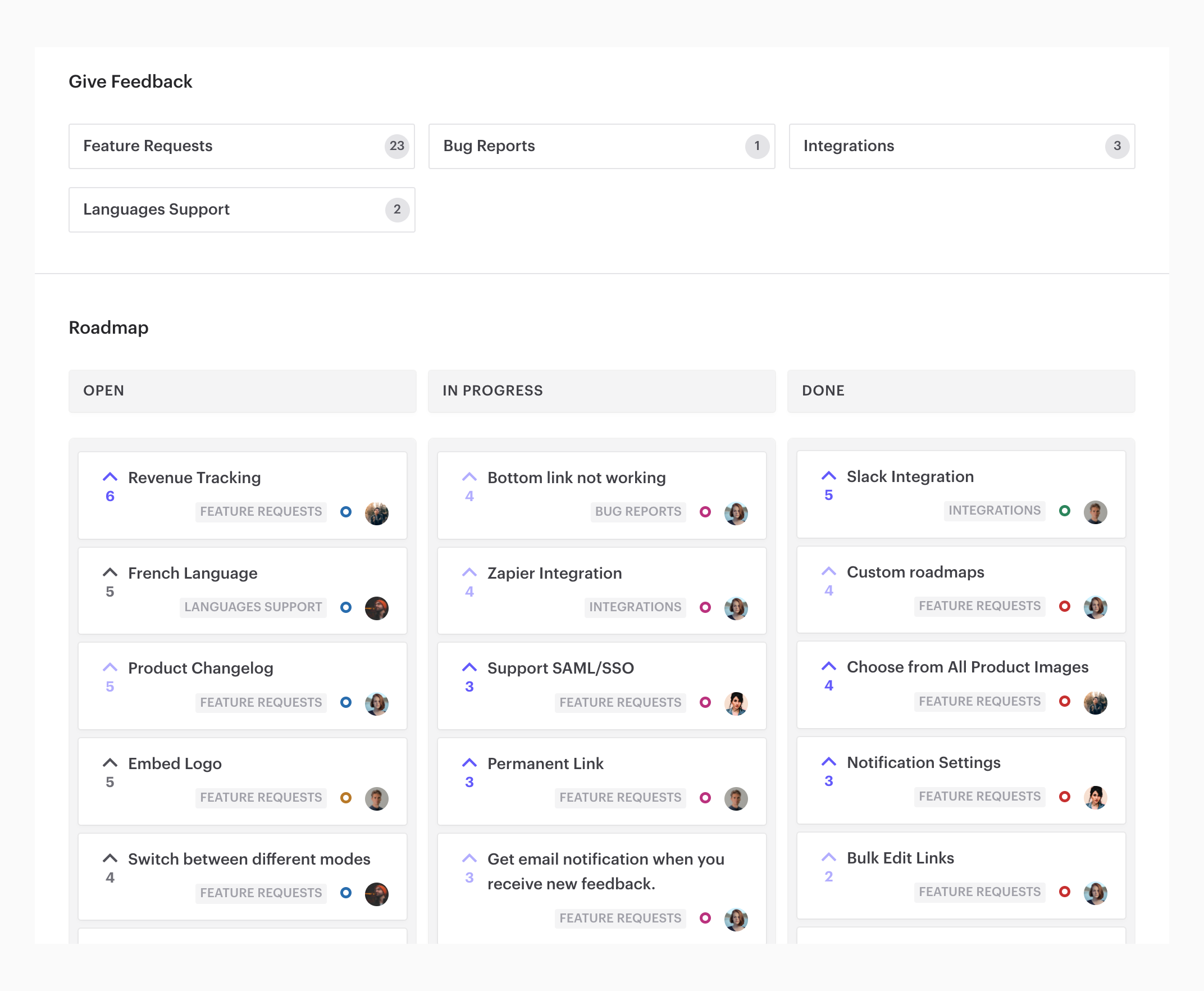
With Rapidr, you can collect, analyze, and organize feedback and engage with customers as their feedback moves through the development process. Sign up and set up a complete customer feedback system to boost customer retention and satisfaction.

